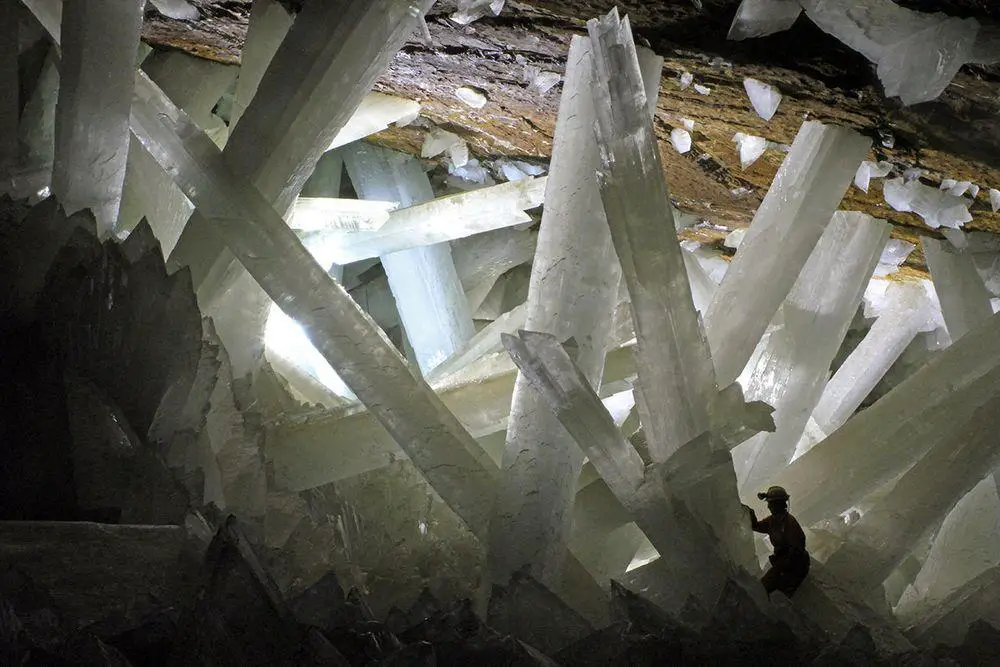World 🢖 Australia and Oceania 🢖 Micronesia 🢖 Northern Mariana Islands
Lakes and streams 🢔 Geological wonders 🢔 Categories of wonders
Wonder
Daikoku Sulfur Cauldron
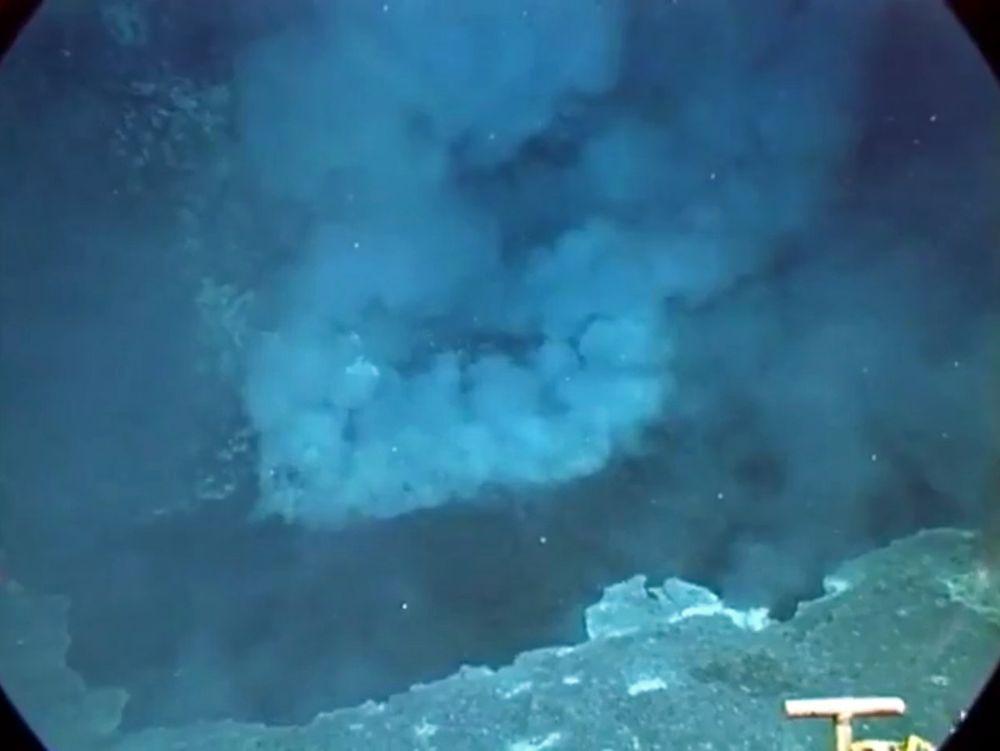
 In short
In short
Earlier people thought that lakes of liquid sulfur are found only in outer space, not on Earth. But some are known also on Earth – in deep seas some were discovered in 2005 – 2006. The most impressive of these sulfur lakes is Daikoku Sulfur Cauldron.
 46.3%
46.3%
GPS coordinates
Location, address
Height
Map of the site
If you see this after your page is loaded completely, leafletJS files are missing.
 In detail
In detail
Discovery
In the remote area between the Northern Mariana Islands and Bonin Islands are quite many active undersea volcanoes. These volcanoes provide much information about the geology of the subduction zone – an area where oceanic crust dives deeper in the entrails of the Earth.
In 2004 scientists discovered one more of these volcanoes and it was named Daikoku Seamount. Word “Daikoku” was given by Japanese fishermen for this fishing area. The summit of this volcano is 323 m below the surface of the sea.
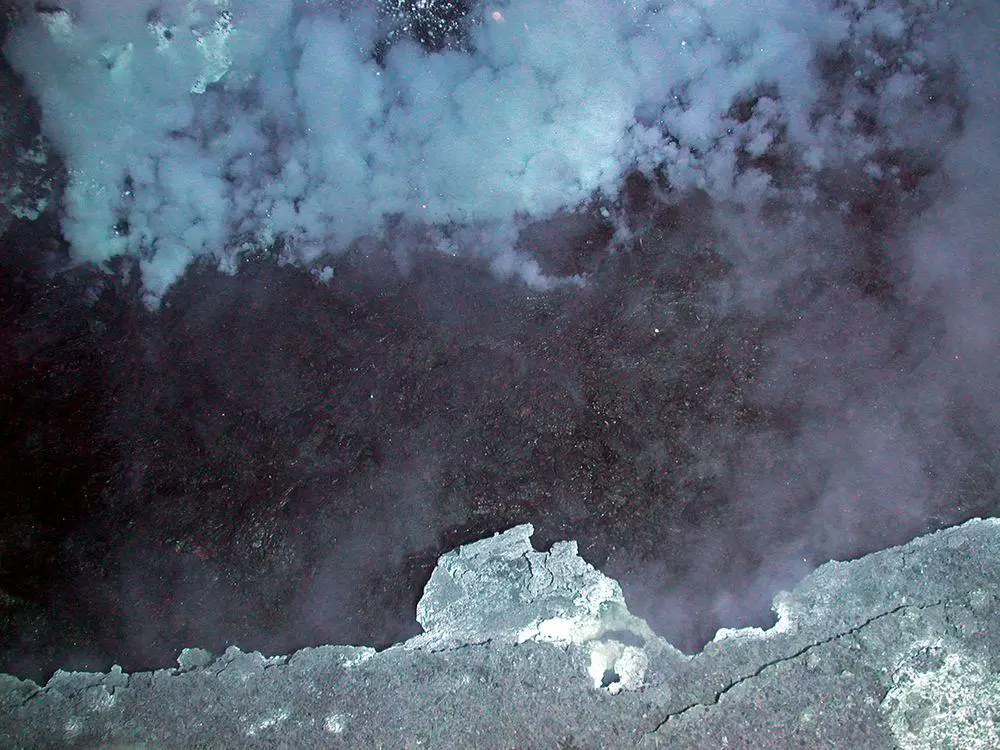
In May 2006 the scientists on research vessel "Melville" (National Oceanic and Atmospheric Agency (NOAA)) with the help of a robot – submersible Remotely Operated Vehicle (ROV) "Jason" – noticed a weird, black spot in a crater north from the tallest summit of Daikoku volcano. As they dropped an anchor chain on the weird spot, it dived in it. This turned out to be a "lake" of liquid sulfur which was covered with a black coating.
Several further scientific expeditions researched this weird crater lake as well. NOAA mission "Submarine Ring of Fire 2014 – Ironman" in 2014 registered an ongoing eruption – rising plume from the summit (in 2006 there was just geothermal activity). Scientists found new craters as well.
This lake is one of the openings of Daikoku volcano and we do not know whether it will exist for long. But it may still exist: oceanologists reported emanations of liquid sulfur from it in December 2016 (2).
Description
Sulfur Cauldron is located at the depth of some 420 m and is approximately 4.5 by 3 m large – thus it is not exactly a "lake". The temperature of the liquid in this lake is 187° C. This pool of sulfur is covered with black, elastic crust and the rising gases (carbon dioxide, hydrogen) are moving the crust: it is continuously billowing. These gases look similar to smoke (but under the water!).
Fish which loves liquid sulfur
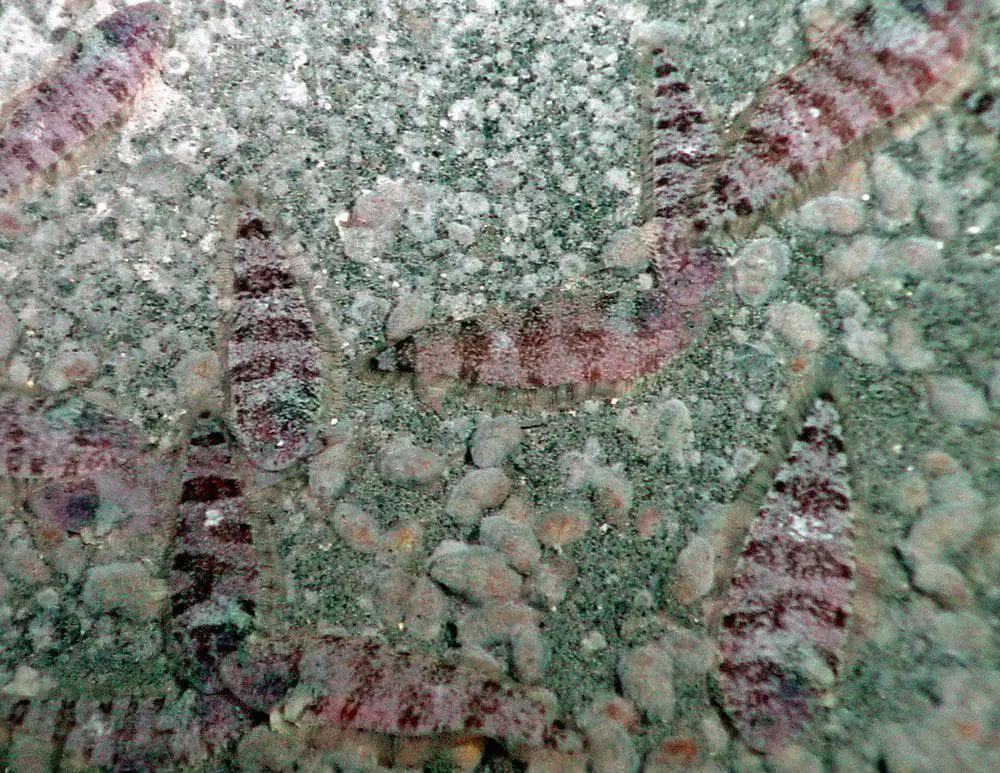
Although this is a nearly unique landmark on Earth, there exists a creature that seems to enjoy living near liquid sulfur. This is flatfish Symphurus thermophilus which was described as a new species only in 2010. The largest of these fishes reach 11 cm in length. This fish lives around the summits of several volcanoes in the Pacific.
Sulfur-rich environment is toxic to most life forms on Earth! But… it seems, this flatfish needs to live in a sulfur-rich environment. In Daikoku Sulfur Cauldron the fish simply lives ON the black crust of the sulfur lake. The crust is considerably cooler than the sulfur below it – but nevertheless, this is quite a hot place for life! Fish here lives in incredible density – in Daikoku have been counted 392 flatfishes per square meter! These weird creatures have developed an ability to survive in extreme acidity (pH – up to 2.0), in high temperatures, and in a toxic environment rich with hydrogen sulfide. Although the fish feeds on shrimps, it is possible that they have developed the ability to consume chemosynthetic bacteria.
Around the Sulfur Cauldron live also other organisms – tubeworms, crabs, snails.
Is this lake unique?
Scientists knew about such lakes of liquid sulfur earlier – but really far away. Such lakes of liquid sulfur are on Io – moon of Jupiter. Thus one can think that Daikoku Seamount is some kind of space oddity. This is not entirely true: there are known some other sulfur lakes on Earth.
On the nearby Nikko Seamount (Japan) a smaller sulfur lake was discovered some months earlier – in November 2005. It is possible though that in Nikko there are bigger lakes of molten sulfur than is Daikoku. There has been discovered also evidence of older sulfur lakes in Macauley Cone (Kermadec Arc) (3).
We know about some lakes of liquid sulfur above the sea level as well: in 1989 there existed short-lived lakes of molten sulfur in Poás volcano (Costa Rica).
Nevertheless Daikoku Sulfur Cauldron is the most impressive lake of liquid sulfur known to us.
References
- Bob Embley. Discovery of the Sulfur Cauldron at Daikoku Volcano: A Window into an Active Volcano. NOAA website, accessed in May 6, 2017.
- Thom Hoffman. Daikoku Dive 2: Sulphur So Good. Schmidt Ocean Institute website, accessed in May 6, 2017.
- C. E. J. de Ronde, W. W. ChadwickJr, R. G. Ditchburn, R. W. Embley, V. Tunnicliffe, E. T. Baker, S. L. Walker, V. L. Ferrini, S. M. Merle. Molten Sulfur Lakes of Intraoceanic Arc Volcanoes. Advances in Volcanology, pp 261 – 288.
Daikoku Sulfur Cauldron is included in the following article:
 Linked articles
Linked articles
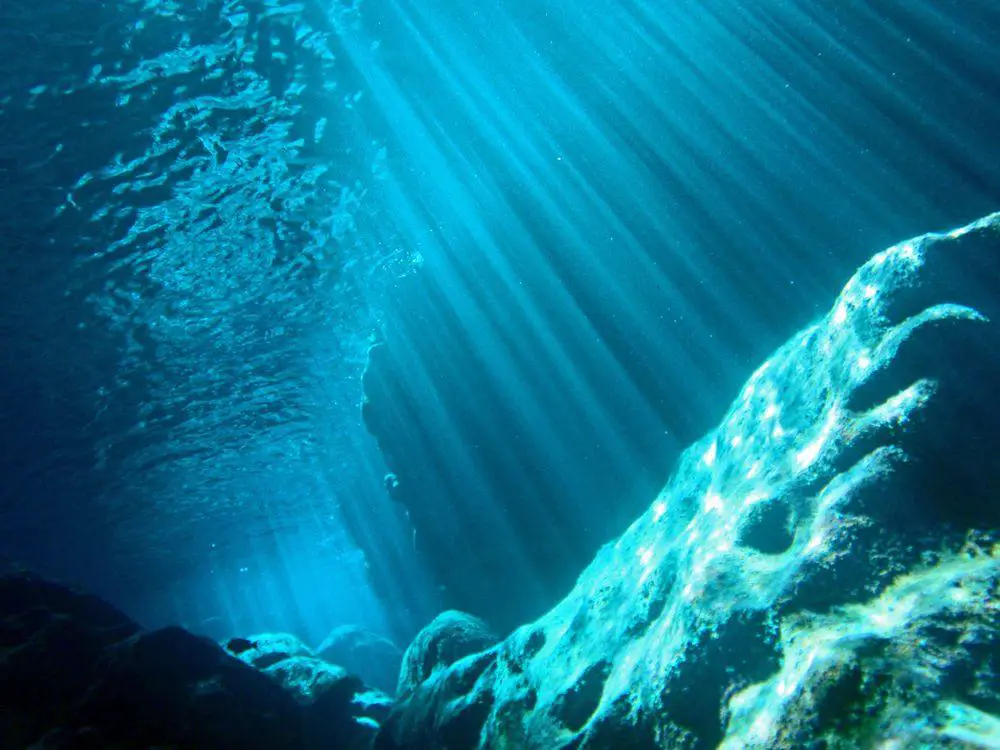
Wonders of Northern Mariana Islands
Highlights of the Northern Mariana Islands are the unique submarine volcanoes, the gorgeous nature, and local megaliths – latte stone settings.
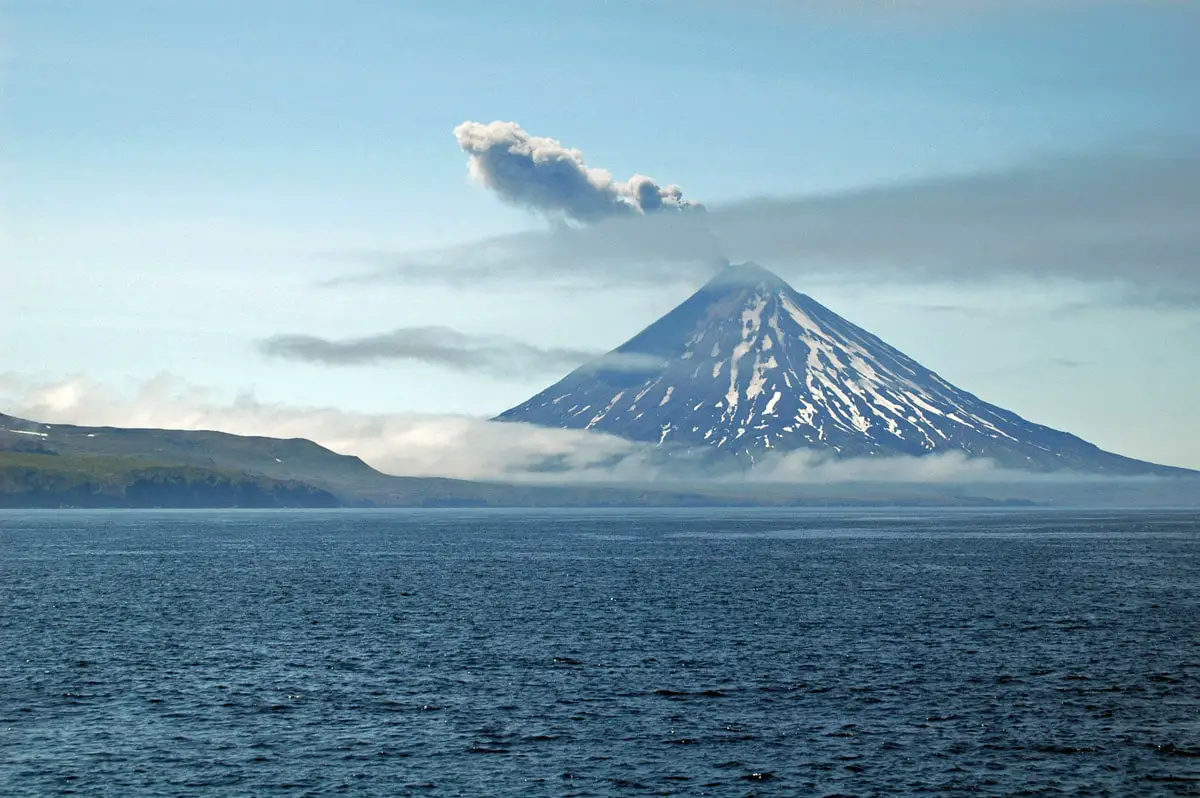
Volcanoes
This category includes the most unusual and interesting volcanoes of the world.
Over the last 10,000 years in some 1,500 places around the Earth mantle of Earth has emitted lava, ash, and gases through the crust of the planet. Each of these places is an active volcano. Some 50 – 70 volcanoes erupt every year and at any moment there are some 20 – 30 eruptions ongoing.
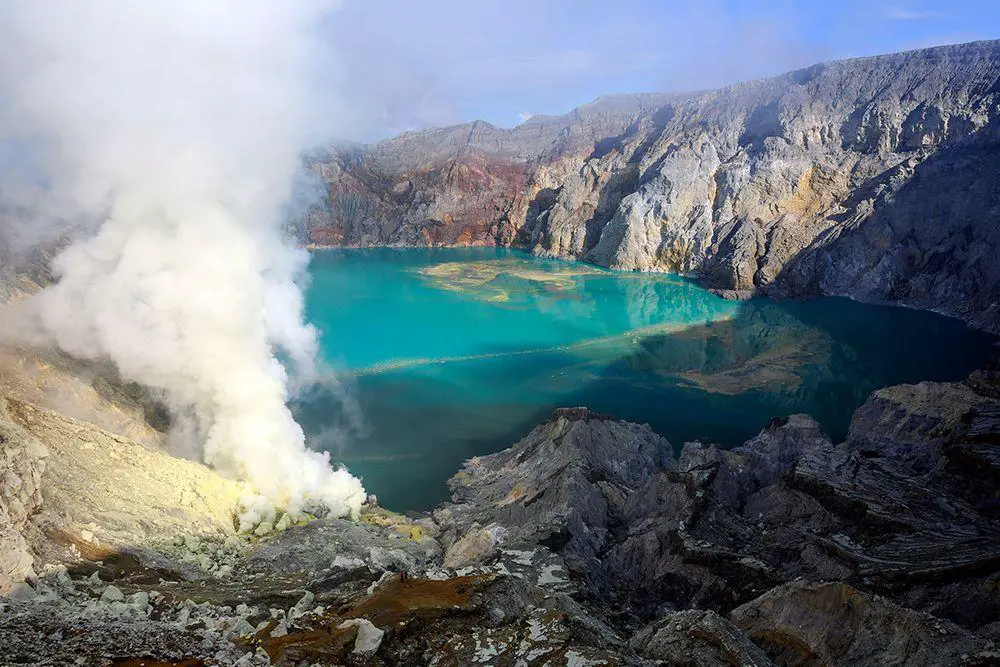
Lakes and streams
There are many factors that can make lakes, sea bays, or rivers unusual. Some lakes have unusual chemical properties and even do not contain water at all – such as lava lakes. Others may have unusual animals living in them or… legends about such animals.
 Recommended books
Recommended books
Diving to a Deep-Sea Volcano
Scientists have mapped less than 10 percent of the ridge of underwater mountains in the middle of the Atlantic ocean. It is here that 95 percent of the volcanic activity on earth occurs. And it is also where the scientist Rich Lutz has tracked the remarkable evolution of bizarre creatures that spawn in hydrothermal vent fluids that are poisonous to most other forms of life.
Submarine Volcanoes and Volcanic Islands
This book is about submarine volcanoes and their ‘children’, the volcanic islands. Discover how these volcanic ‘giants’ are born under the seas and the oceans. Find out when a new island may emerge through lava.

